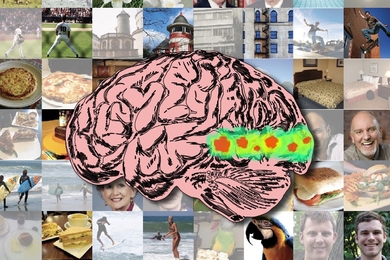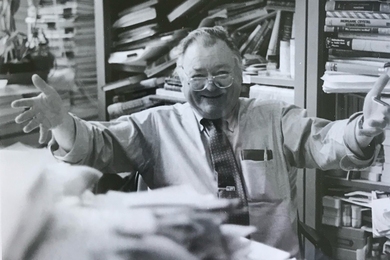CAMBRIDGE, MA -- Steven F. Heim of Montpelier, VT, entered the Massachusetts Institute of Technology on a dare in the mid-'70s. He finishes with flair, receiving dual Bachelor of Science degrees Friday (June 6), 22 years after he came here as a bright-eyed farm-town boy.
The dare involved Florentino Guizar, his friend and high school classmate in Gilroy, CA, the garlic capital of the world. As a lark during their senior years, Mr. Guizar applied to Harvard and Mr. Heim applied to MIT, with neither expecting to be accepted. Both were and both came East to attend college.
Like many freshmen, Mr. Heim was overwhelmed by MIT, alienated, a little scared. Professor emeritus Jerome Y. Lettvin told Mr. Heim, "A little suffering is good for the soul." He also said, "You need an enemy. I'll be your enemy."
From the beginning, Mr. Heim, the son of Presbyterian missionaries, had misgivings about MIT's lack of sensitivity to environmental concerns and the social and political impact of technology. He declared a major as a junior--urban studies and planning--but knew he probably wouldn't return for his senior year.
"I felt my soul was being crushed," said Mr. Heim. "I felt like I was losing my ability to think for myself, my sense of integrity. I felt the technological philosophy at MIT was hurting me. I wanted to take a year off."
Mr. Heim left MIT to work on an organic farm in California. When the farm project moved east, he landed a job in energy policy for the Santa Clara County Planning Department Meanwhile, Mr. Guizar graduated from Harvard with his class and gradually drifted out of Mr. Heim's life.
In 1980, Mr. Heim started consulting on solar energy economics, with goverment agencies in Palo Alto, CA, and Portland, OR as his first clients. This assignment was followed by many others that kept a return to MIT on hold.
As he approached age 30, Mr. Heim began to re-evaluate his decision to leave MIT. He moved to Vermont with his wife-to-be, Katherine, intent on completing his MIT education. Beginning in 1988, he acquired a course catalog each year and mapped out degree programs. Starting in 1994, he took economics courses part-time at the University of Vermont and worked for Rural Vermont, a non-profit activist group. He knew he'd finish work toward his MIT degree. The only question was when.
"It was something in my life that I hadn't completed, a big dream," he said. "Like swimming. Four years ago, I decided I had to learn how to swim. And I did. I'd still like to pass the MIT swimming test."
He registered for classes for the 1996 spring term and rented a small apartment in Harvard Square. Mr. Heim worked part-time as an environmental consultant at Walden Capital Management, a global investment management firm in Boston for socially concerned investors. He was also a full-time student, taking international business law, public policy controversies, science journalism and modern images of technology and nature (he also finished an incomplete from 1977). "It was lonely and it was exhilarating, all at the same time," Mr. Heim said. "It was also scary at first. I wasn't sure I could do all the work."
He renewed acquaintances with some of his old professors and took their classes, noticing a more sympathetic attitude toward environmental concerns at MIT than he had in his youth. "I felt validated," he said.
Mr. Heim plugged along and completed his thesis in January entitled, "Sustaining Vermont: Cooperatives in Vermont as Economic Development." In February, he was officially an MIT graduate. Mission accomplished.
At age 40, Mr. Heim will don a cap and gown and march up to receive degrees in urban planning and in humanities and engineering at commencement. His proud father, Richard, will travel cross-country to be in the audience. In July, Mr. Heims will celebrate with his mother, Martha, and the rest of his family in California. The accomplishment gives him a "sense of elation."
"I feel very much at peace with myself," he said.





